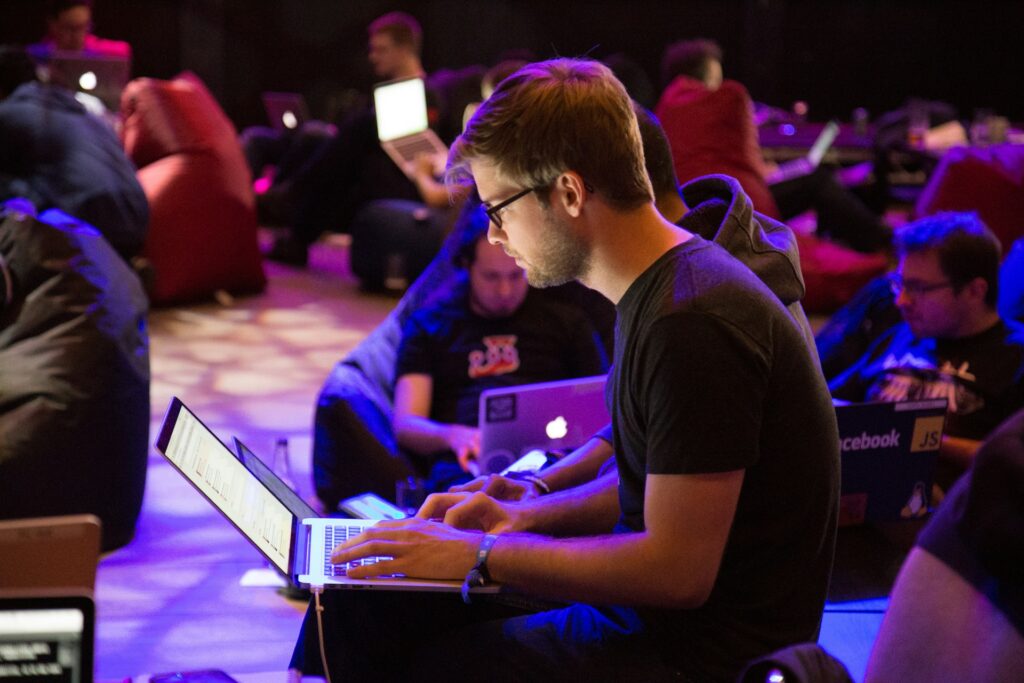
San Francisco and the broader Bay Area are at the heart of the tech industry, making technology an integral part of daily life. From work and networking to socializing and entertainment, digital platforms shape the way we interact with the world. But what happens when constant connectivity starts to feel like a compulsion?
Tech, social media, and internet addiction are behavioral conditions where individuals struggle to regulate their online engagement. This can impact relationships, mental health, and overall well-being. Unlike substances, behavioral addictions don’t involve a chemical dependency, but they still activate the brain’s reward system, leading to compulsive engagement despite negative consequences.
If you’re feeling overwhelmed by screen time, struggling with digital boundaries, or experiencing distress around your internet use, therapy can help. Whether you want to regain balance, set healthier habits, or explore deeper emotional patterns related to technology, a therapist can support your journey.
Browse our Therapist Directory
Quick Navigation
- What Is Tech, Social Media, and Internet Addiction?
- Understanding Behavioral Addiction vs. Habitual Use
- Internet & Social Media Addiction in the Bay Area
- Differences Between Internet Addiction in Adults vs. Children
- How Therapy Helps with Tech and Social Media Addiction
- Types of Therapy for Tech and Social Media Addiction
- Tech & Social Media Addiction Through a Multicultural & Systems-Based Lens
- Next Steps
What Is Tech, Social Media, and Internet Addiction?
Tech, social media, and internet addiction involve compulsive engagement with digital devices or platforms, leading to distress or disruption in daily life. Some common forms include:
- Compulsive Social Media Use. Excessive scrolling, posting, or checking notifications, often linked to validation-seeking or escapism.
- Online Gaming Addiction. Engagement in multiplayer or single-player online games to the point where it disrupts relationships, work, or personal health.
- Work & Productivity Addiction. A phenomenon often seen in high-stress environments like San Francisco’s tech industry, where individuals feel compelled to constantly check emails, Slack, or work tasks, leading to burnout.
- Doomscrolling & News Addiction. A cycle of endlessly consuming distressing news, leading to heightened anxiety and difficulty disengaging.
- Streaming & Entertainment Bingeing. Over-reliance on digital entertainment, such as binge-watching shows or spending excessive hours on platforms like YouTube or TikTok.
- Online Shopping & Digital Consumerism. Compulsive online spending, sometimes linked to stress relief, avoidance, or impulse control issues.
Unlike substance use disorders, internet and tech addiction often present in ways that may seem culturally acceptable, making it harder to recognize when use has become harmful.
Understanding Behavioral Addiction vs. Habitual Use
Not all frequent internet use is addiction. Most of us rely on tech for work, socializing, or hobbies. Many of us engage with our devices without any problems. The distinction between addiction and habitual use often comes down to control and distress.
Signs of Tech or Internet Addiction:
- Feeling unable to control or reduce usage
- Neglecting responsibilities due to screen time
- Using the internet or devices as a primary way to cope with stress, anxiety, or loneliness
- Experiencing withdrawal symptoms (irritability, anxiety) when not using devices
- Disruptions in sleep, relationships, or work due to excessive tech engagement
- Increased secrecy or defensiveness about digital habits
Therapy can help determine whether your internet habits are problematic or simply part of modern digital life. Moreover, therapy can help you figure out the best ways to optimize your use of technology in order for it to support your life in alignment with your goals.
Internet & Social Media Addiction in the Bay Area
San Francisco’s role as a global tech hub shapes digital behaviors in unique ways:
Work-Life Integration & Digital Burnout
Many industries in the Bay Area, particularly in tech, finance, and startups, promote a culture of constant connectivity. Employees often feel pressure to remain available, respond to messages instantly, and monitor work-related apps outside of official work hours.
This expectation, combined with the rise of remote work, can blur the boundaries between professional and personal life, making it difficult to truly disconnect. Over time, this can lead to chronic stress, burnout, disrupted sleep patterns, and difficulty being present in offline spaces. Many individuals report feeling guilty or anxious when they step away from their devices, reinforcing a cycle of overwork and digital dependence.
Therapy can help you establish healthier boundaries, challenge productivity-based self-worth, and create sustainable work-life balance strategies that honor both career success and personal well-being.
Social Media & Networking Pressures
In the Bay Area, professional success is often linked to visibility, branding, and digital networking. LinkedIn, Twitter, and other professional platforms create an environment where people feel they must constantly post updates, engage with industry conversations, or cultivate a personal brand.
For influencers, entrepreneurs, and tech professionals, maintaining an active online presence can feel like an unwritten job requirement. While these platforms provide valuable opportunities for connection and career growth, they can also lead to compulsive checking, comparison-based anxiety, and a sense of professional inadequacy when faced with curated images of others’ successes. Social media validation can become addictive, reinforcing patterns of overuse, perfectionism, and fear of missing out (FOMO).
Therapy can help you explore their relationship with online identity, shift from external validation to internal confidence, and redefine success on your own terms.
The Role of Digital Detox Culture
San Francisco and the Bay Area are home to a growing digital wellness movement, with people embracing digital detox retreats, phone-free social events, and mindfulness-based approaches to technology use. These practices provide individuals with an opportunity to reconnect with themselves and their surroundings without the distractions of screens.
However, for many professionals, students, and content creators, completely stepping away from technology is neither practical nor desirable. The reality is that technology is an essential part of modern life, and finding a sustainable and intentional approach to screen time is often more effective than complete abstinence. Instead of viewing digital detoxes as an extreme measure, they can be reframed as intentional breaks, mindful check-ins, and opportunities for self-reflection.
Therapy can help you develop a balanced relationship with technology, incorporating healthy pauses and screen-time boundaries without feeling disconnected from your work, social circles, or creative pursuits.
Browse our Therapist Directory
Differences Between Internet Addiction in Adults vs. Children
Tech addiction affects different age groups in unique ways, some of which are:
Adults
- Work-related overuse (checking emails, work apps off-hours)
- Struggles with balancing career demands and personal life
- Compulsive online dating, gambling, or shopping behaviors
- Increased anxiety or comparison due to social media
- Indecision around parenting choices for social media use in the family
Children & Teens
- Academic struggles due to excessive gaming or social media use
- Increased risk of cyberbullying and online peer pressure
- Greater susceptibility to dopamine-driven app design
- Developing brains are more vulnerable to compulsive engagement
Additionally, we’ve seen a rise among children and teens in:
-
Increased Screen Time for School & Learning Burnout. In the Bay Area, where education is highly competitive, children and teens are expected to engage with technology extensively for schoolwork, research, and extracurricular activities. The shift to remote learning during COVID-19 normalized prolonged screen time, making it harder for kids to distinguish between necessary tech use and recreational screen habits. Many students now experience tech fatigue, eye strain, and difficulty unplugging, even when they want to.
-
Blurring of School and Social Tech Use. With many schools integrating Google Classroom, Zoom, and digital collaboration tools, kids often feel pressure to be constantly connected to their devices for both academic and social reasons. The same laptops or tablets used for homework are also used for social media, gaming, and entertainment, making it difficult to set boundaries. Many children and teens struggle to shift from structured learning to intentional downtime, leading to burnout, digital overwhelm, and a reliance on screens for relaxation rather than other offline activities.
Therapy can support both adults and families in navigating technology’s role in their lives. Kids and teens may come to individual therapy just like adults or family therapy might address the impact of technology in the home.
How Therapy Helps with Tech and Social Media Addiction
Therapy can help you develop a healthier, more intentional relationship with technology by providing tools to manage compulsive internet use, reduce digital overwhelm, and address deeper emotional patterns.
- Build healthier boundaries around digital engagement, creating a balance between online and offline life.
- Identify emotional triggers that lead to compulsive internet use, such as stress, loneliness, or boredom.
- Develop alternative coping strategies for stress, anxiety, or social disconnection that don’t rely on screens.
- Address underlying issues such as self-worth, perfectionism, or escapism that may contribute to excessive tech use.
- Improve relationships affected by excessive screen time, helping you become more present and engaged with loved ones.
- Reduce feelings of guilt or shame around technology use by reframing habits in a non-judgmental way.
- Establish mindful technology use that aligns with your personal values, lifestyle, and career needs.
- Navigate work expectations and social pressures while maintaining a sense of autonomy over your digital habits.
- Explore practical tools such as screen time limits, app restrictions, and intentional tech use without rigid or unrealistic goals.
If you’re unsure whether your tech habits are problematic, therapy can help you assess your relationship with digital spaces and develop an approach that feels empowering rather than restrictive.
Browse our Therapist Directory. We want to help.
Types of Therapy for Tech and Social Media Addiction
There are various therapeutic approaches that can support individuals struggling with internet or social media addiction:
There is no one-size-fits-all approach to addressing tech, social media, and internet addiction. Therapy can help individuals explore their relationship with technology and develop tools for more intentional engagement. Different therapeutic modalities offer various strategies to address compulsive digital behaviors, emotional regulation, and the underlying patterns that contribute to excessive screen use.
Cognitive Behavioral Therapy (CBT)
Cognitive Behavioral Therapy (CBT) helps individuals reframe the thought patterns that drive compulsive tech use. Many people turn to their devices out of habit, stress relief, or avoidance of uncomfortable emotions. CBT focuses on recognizing these automatic behaviors and replacing them with healthier coping mechanisms. If you find yourself instinctively reaching for your phone when feeling anxious, lonely, or bored, therapy can help you become more aware of these moments and introduce intentional actions that align with your well-being.
Mindfulness-Based Therapy
Mindfulness-based therapy encourages greater awareness of digital habits, promoting a more intentional relationship with technology. Many people feel disconnected from their screen time, realizing too late that they have spent hours scrolling, gaming, or watching videos. Mindfulness-based approaches help individuals pause, observe their urges to engage with tech, and make conscious decisions rather than acting on impulse. By integrating mindfulness techniques, therapy can help you use technology with purpose rather than as a default response to stress, boredom, or social pressure.
Psychodynamic Therapy
Psychodynamic therapy explores the deeper emotional or relational roots of digital dependency. Unlike CBT, which focuses on present-moment behaviors, psychodynamic therapy looks at how past experiences and unresolved emotional conflicts influence your current relationship with technology. For some individuals, excessive screen time may be linked to unmet emotional needs, social anxiety, or past relational challenges. Therapy can help uncover these deeper patterns, allowing individuals to develop healthier ways of seeking connection, validation, or relaxation outside of digital spaces.
Family Therapy
Excessive technology use does not only affect individuals—it can impact relationships with partners, children, and family members. Family and couples therapy can help navigate digital boundaries, communication challenges, and conflicts that arise around technology use. Parents may struggle with setting screen-time limits for their children, while partners may feel disconnected due to excessive device use in their relationships. Therapy provides a space to set shared expectations, improve digital communication, and foster healthier interactions both online and offline.
Intensive Programs: Inpatient and Wilderness Therapy for Tech Addiction
For some individuals, especially teenagers, intensive programs such as inpatient treatment centers, digital detox retreats, and wilderness therapy programs are sometimes recommended. These programs provide a structured environment where individuals can take a break from technology and develop alternative coping skills. Some families find these programs helpful in addressing severe tech dependency, especially when digital behaviors interfere with school, family relationships, or mental health.
However, there is controversy surrounding intensive treatment programs, particularly wilderness therapy and digital detox camps. Some critics argue that these programs may use punitive approaches rather than therapeutic ones, and there have been concerns about safety, effectiveness, and the long-term impact of removing individuals from their everyday environment. While some people benefit from these interventions, others may find that working with a local therapist offers a more sustainable and integrative approach to managing tech use. Therapy allows individuals to address their digital habits in the context of their real-life environments, work, and relationships, rather than through temporary removal from technology.
Your therapist will work with you to find the techniques and modalities that are most in alignment with your goals and needs around tech use and misuse.
Tech & Social Media Addiction Through a Multicultural & Systems-Based Lens
Our relationship with technology is not just a personal experience—it is shaped by cultural, economic, and systemic factors that influence how we engage with digital spaces. While some individuals may feel pressure to disconnect and detox, others find that social media and digital tools are integral to their identity, career, activism, or relationships. A therapist who understands these dynamics can help individuals explore how culture, systemic structures, and personal history shape their relationship with technology and work toward a more intentional digital presence.
The Role of Identity in Digital Spaces
For many marginalized communities, LGBTQ+ individuals, and people of color, social media serves as a critical space for connection, self-expression, and activism. It allows individuals to find representation, build supportive networks, and engage in discussions that may not be available in their offline environments. Many people feel that social media provides a lifeline to communities and identities that they would otherwise struggle to access.
At the same time, online spaces can expose marginalized individuals to higher rates of harassment, discrimination, and algorithmic bias, making digital engagement both empowering and exhausting. Some people experience emotional burnout, compulsive checking of online discussions, or difficulty stepping away from activism-driven content. Therapy can help individuals explore their digital identity, set boundaries, and create a balance between online advocacy and personal well-being without guilt or shame.
Cultural Expectations Around Productivity
In many cultures, productivity is directly tied to self-worth, success, and personal identity. This can make it challenging for individuals to set limits around digital work engagement, especially in industries where “hustle culture” encourages overwork and constant online presence.
For professionals in high-performance environments—such as tech, finance, medicine, and creative industries—social media, email, and messaging apps create the expectation that people should be available, responsive, and engaged at all times. Many individuals feel that stepping away from their devices signals a lack of ambition or dedication, even when they recognize the negative impact of digital overuse on their mental health.
Therapy can help individuals challenge unhealthy work norms, set digital boundaries that feel realistic, and redefine success in ways that prioritize well-being alongside professional achievement. It also provides a space to process feelings of guilt, anxiety, or fear of falling behind that may arise when taking breaks from digital workspaces.
The Global Nature of Online Interactions
For many immigrants, refugees, and diasporic individuals, social media and digital platforms serve as a primary way to maintain connections with home communities, cultures, and loved ones. In a world where families are increasingly spread across continents, digital engagement is not just a convenience—it is a lifeline to relationships, traditions, and cultural belonging.
However, the pressure to stay digitally connected across multiple time zones and social expectations can create emotional strain. Some individuals feel obligated to maintain constant digital communication with family, even when it interferes with their personal well-being. Others struggle with balancing cultural expectations around online presence with the realities of their daily lives in a different country.
Therapy can help individuals explore their digital connections, set healthy communication boundaries with family and friends, and navigate the emotional complexities of maintaining online relationships across different cultural contexts.
Digital Inequality and Systemic Barriers to Healthy Tech Use
Not all individuals have the same access to healthy, mindful, or even safe digital experiences. Systemic factors such as economic inequality, educational opportunities, and government regulations influence how different communities engage with technology.
- Digital accessibility: Some individuals rely on technology for work, education, or essential services but may not have access to digital literacy training or privacy protections.
- Tech surveillance and online safety: In some countries and marginalized communities, individuals may experience greater risks of online surveillance, censorship, or targeted harassment.
- Algorithmic bias and content visibility: Many people face structural disadvantages in how their content is amplified or suppressed by digital algorithms, affecting career opportunities, advocacy efforts, or community engagement.
Therapy can provide a space to process frustrations around digital inequality, build strategies for safer online engagement, and navigate the emotional impact of systemic digital barriers.
Balancing Digital Connection with Personal Well-Being
In a world where tech use is both essential and overwhelming, finding a balanced and intentional digital presence is crucial. Therapy can help individuals:
- Examine how cultural and systemic influences shape their relationship with technology
- Develop a personal framework for digital engagement that aligns with their identity, career, and well-being
- Explore boundaries around social media, digital workspaces, and online relationships
- Process feelings of digital exhaustion, FOMO, or guilt when taking time away from screens
- Create an intentional approach to technology use without feeling forced into extreme detoxes or disconnection
For those struggling with tech overuse, compulsive digital behaviors, or online stressors, therapy can provide the tools to build a sustainable, mindful, and self-affirming relationship with technology that supports both connection and well-being.
Next Steps
Find a San Francisco therapist who is ready to work with you on tech habits.
If you’re struggling with tech, social media, or internet addiction, finding a therapist who understands the complexities of digital life is essential. Browse our therapist directory to find someone who can support you in reclaiming balance.
Browse our Therapist Directory. We are here to help.





